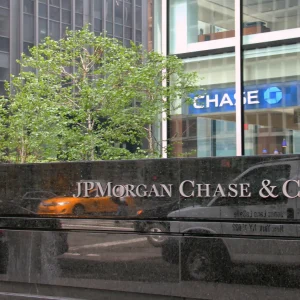
The banking industry has long been a prime target for cybercriminals due to the vast amounts of sensitive financial information and funds at its disposal. As banks increasingly adopt digital technologies to enhance customer experiences and streamline operations, they also face heightened risks of cyber threats. This article explores the current landscape of cyber insecurity in the banking industry, identifies major challenges, and examines effective strategies for mitigating these risks.
The Evolving Cyber Threat Landscape
The cyber threat landscape is constantly evolving, with cybercriminals becoming more sophisticated and inventive. Several key trends define the current state of cyber insecurity in the banking sector:
1. Increasing Frequency of Cyber Attacks
Banks are experiencing a surge in cyber attacks, ranging from data breaches to sophisticated ransomware attacks. According to a report by Accenture, the banking sector faced an average of 85 serious cyber attacks per year in 2022, a sharp increase from previous years. These attacks often result in significant financial losses and reputational damage.
2. Rise of Ransomware
Ransomware has emerged as a particularly menacing threat. Cybercriminals encrypt critical data and demand hefty ransoms for its release. The banking industry is a prime target due to the high value of its data. The Colonial Pipeline attack in 2021, though targeting an energy company, highlighted the potential for disruption and the substantial ransoms demanded by cybercriminals.
3. Phishing and Social Engineering
Phishing and social engineering attacks are increasingly sophisticated. Cybercriminals use deceptive emails, messages, and even phone calls to trick bank employees and customers into revealing sensitive information. These attacks often serve as the entry point for more complex cyber intrusions.
4. Insider Threats
Insider threats, whether malicious or accidental, pose significant risks. Employees with access to sensitive information can inadvertently or deliberately compromise security. The 2020 case of a former Capital One employee who accessed and exposed the personal data of over 100 million customers underscores the potential for insider threats.
Major Challenges in Cyber Security for Banks
The banking industry faces several challenges in combating cyber insecurity. These challenges are multifaceted, involving technological, regulatory, and human factors.
1. Complex IT Infrastructures
Banks operate with complex IT infrastructures that include legacy systems, cloud services, and mobile platforms. Integrating these diverse systems while maintaining robust security is a daunting task. Legacy systems, in particular, may lack modern security features, making them vulnerable to attacks.
2. Regulatory Compliance
Banks must navigate a labyrinth of regulatory requirements designed to protect customer data and ensure financial stability. Regulations such as the General Data Protection Regulation (GDPR) in Europe and the Gramm-Leach-Bliley Act (GLBA) in the United States impose stringent security standards. Compliance requires significant resources and ongoing vigilance.
3. Talent Shortages
The shortage of skilled cybersecurity professionals exacerbates the challenges faced by banks. The demand for cybersecurity experts far exceeds the supply, leading to fierce competition for talent. Banks must invest in training and retaining skilled personnel to effectively combat cyber threats.
4. Rapid Technological Advancements
The pace of technological change presents both opportunities and challenges. While new technologies can enhance security, they also introduce new vulnerabilities. Banks must stay abreast of technological developments and continuously update their security protocols to address emerging threats.
Effective Strategies for Mitigating Cyber Risks
To address the growing cyber insecurity, banks must adopt a multifaceted approach that combines advanced technology, robust policies, and continuous education.
1. Implementing Advanced Security Technologies
Banks should leverage advanced security technologies to protect their assets. Key technologies include:
- Artificial Intelligence and Machine Learning: AI and ML can detect unusual patterns and anomalies that may indicate a cyber attack. These technologies can analyse vast amounts of data in real time, providing early warnings and enabling rapid response.
- Encryption: Strong encryption ensures that sensitive data remains secure, even if it is intercepted. Banks should encrypt data at rest and in transit to protect it from unauthorised access.
- Multi-Factor Authentication (MFA): MFA adds an extra layer of security by requiring multiple forms of verification before granting access to systems and data. This reduces the risk of unauthorised access through stolen credentials.
2. Enhancing Regulatory Compliance
Compliance with regulatory standards is essential for maintaining security and customer trust. Banks should:
- Regular Audits: Conduct regular security audits to identify vulnerabilities and ensure compliance with regulatory requirements.
- Data Protection Officers (DPOs): Appoint DPOs to oversee data protection strategies and ensure compliance with regulations such as GDPR.
- Incident Response Plans: Develop and regularly update incident response plans to swiftly and effectively respond to cyber attacks.
3. Investing in Cybersecurity Training
Human error is a significant factor in many cyber incidents. Banks must invest in ongoing cybersecurity training for employees at all levels. Key areas of focus include:
- Phishing Awareness: Educate employees about phishing tactics and how to recognise and report suspicious emails and messages.
- Security Best Practices: Train employees on security best practices, such as strong password policies, safe internet usage, and secure data handling.
- Simulated Attacks: Conduct regular simulated cyber attacks to test and improve employees’ readiness to respond to real threats.
4. Strengthening Insider Threat Defences
To mitigate insider threats, banks should implement stringent access controls and monitoring mechanisms:
- Access Controls: Limit access to sensitive data based on job roles and responsibilities. Implement the principle of least privilege to minimise the risk of unauthorised access.
- Monitoring and Analytics: Use advanced monitoring tools to track employee activities and detect unusual behaviour. Implement analytics to identify potential insider threats.
- Whistleblower Programs: Encourage employees to report suspicious activities by establishing anonymous whistleblower programmes.
5. Collaborating with Industry Partners
Collaboration is crucial in the fight against cyber insecurity. Banks should work together and with other industry stakeholders to share information and best practices:
- Information Sharing: Participate in industry groups and information-sharing organisations such as the Financial Services Information Sharing and Analysis Centre (FS-ISAC). Sharing threat intelligence can help banks stay ahead of emerging threats.
- Public-Private Partnerships: Engage in public-private partnerships to enhance collective cybersecurity efforts. Governments and private sector entities can collaborate to develop effective security strategies and respond to threats.
Case Study: JPMorgan Chase
JPMorgan Chase, one of the largest banks in the United States, provides a compelling case study in effective cybersecurity practices. Following a major cyber attack in 2014 that compromised the data of 76 million households, JPMorgan Chase significantly bolstered its cybersecurity measures. Key steps included:
- Increased Investment: The bank increased its annual cybersecurity budget to $500 million, underscoring the importance of robust security measures.
- Advanced Technology: JPMorgan Chase implemented advanced technologies such as AI and machine learning to enhance threat detection and response capabilities.
- Employee Training: The bank launched comprehensive cybersecurity training programmes for employees to reduce the risk of human error.
- Collaboration: JPMorgan Chase actively participates in industry groups and collaborates with other financial institutions to share threat intelligence and best practices.
The Future of Cyber Security in Banking
As cyber threats continue to evolve, banks must remain vigilant and proactive in their cybersecurity efforts. Future trends that are likely to shape the cybersecurity landscape in banking include:
1. Quantum Computing
Quantum computing has the potential to revolutionise cybersecurity, both positively and negatively. While quantum computers could break current encryption methods, they also promise new forms of encryption that could be virtually unbreakable. Banks must stay informed about developments in quantum computing and prepare for its potential impact.
2. Blockchain Technology
Blockchain technology offers significant potential for enhancing security in banking. Its decentralised nature and cryptographic security can reduce the risk of fraud and improve the integrity of financial transactions. Banks are increasingly exploring blockchain for secure and transparent operations.
3. Zero Trust Architecture
Zero Trust Architecture (ZTA) is gaining traction as a security model that assumes no implicit trust within an organisation’s network. Instead, every access request is verified, regardless of its origin. Implementing ZTA can significantly enhance security by reducing the risk of unauthorised access.
4. Cybersecurity Automation
Automation is playing an increasingly important role in cybersecurity. Automated systems can rapidly identify and respond to threats, reducing the burden on human analysts and improving response times. Banks should invest in automation to enhance their cybersecurity posture.
Conclusion
Cyber insecurity poses a significant and growing threat to the banking industry. As cybercriminals become more sophisticated, banks must adopt a proactive and comprehensive approach to cybersecurity. By leveraging advanced technologies, enhancing regulatory compliance, investing in employee training, and collaborating with industry partners, banks can mitigate risks and protect their assets. The future of cybersecurity in banking will be shaped by emerging technologies such as quantum computing and blockchain, as well as innovative security models like Zero Trust Architecture. By staying ahead of these trends and continuously evolving their security strategies, banks can navigate the complex landscape of cyber insecurity and safeguard their operations and customers.
In the ever-evolving battle against cyber threats, vigilance, adaptability, and collaboration will remain key pillars of a robust cybersecurity strategy.






